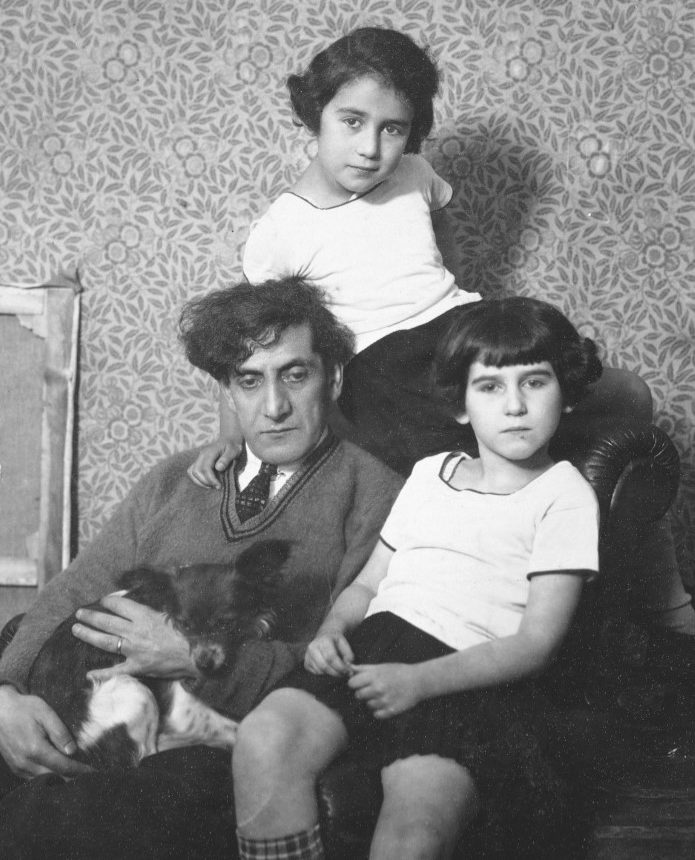Jacques GOTKO
January 2, 2019Samuel GRANOWSKY
January 2, 2019Leopold GOTTLIEB
DROHOBYCZ (EASTERN GALICIA) 1883 – PARIS 1934
Leopold Gottlieb’s parents were storekeepers and encouraged their son to become an artist. They hoped that he would follow in the footsteps of his elder brother, Mauricy Gottlieb, who was a painter and had died at the age of only twentythree. Between 1896 and 1902, Leopold Gottlieb studied painting at the School of Fine Arts in Krakow with Jacek Malczewski. At the end of his course, he was awarded the painting first prize as well as a scholarship to go abroad. In 1903, Gottlieb went to Munich and continued his studies with A. Azbe. At the same time, he painted portraits in order to earn his living.
In 1905, on the initiative of the Group of Five, which only existed for a year, he exhibited in Poland and abroad with his friends, notably Witold Wojtkiewicz. He visited Paris for the first time in 1899. In 1906, he studied painting for a year at the Bezalel School of Fine Arts in Jerusalem. Back in Paris, he married a young doctor. She was erudite, had a passion for Jewish culture, and participated in the artistic life in Montparnasse. Gottlieb became friends with Pascin, Diego Rivera, André Salmon, Mela Muter, and Elie Nadelman. He was renowned for his portraits, had his friends pose for him, and was commissioned to produce works, notably by Dr Gustave Bohn and Henri Bergson. He often visited Poland where he took part in the Formists’ group and in the Rhythm movement.
In 1914, following a disagreement with painter Moise Kisling, Leopold Gottlieb fought a duel at the Parc des Princes. For an hour, the two opponents inflicted intense sword blows on each other. With the back of his sword, Gottlieb slightly split Kisling’s nose open. The news spread through Montparnasse, and was even reported in the press. From 1913, Gottlieb took part in the debates in favor of Poland’s independence at the Association of Polish Artists in Paris, which had been founded by sculptor Stanislaw Ostrowski in 1910. The meetings took place in Montparnasse, at 32 rue Denfert- Rochereau. Henri Hayden, Eugene Zak, and Mela Muter were among the members of this association. Gottlieb also participated in the exercises of a paramilitary organization called Le Tireur. Only a small group of people knew the existence of this organization. He was openly linked to Polish patriotism and joined the ranks of Marshal Pilsudski. During World War I, he was in Poland and painted scenes of soldiers’ everyday lives. These thumbnail paintings were revised after the war in a collection of lithographs published the year of his death.
In 1919, Gottlieb taught classes at the Academy of Arts in Zakopane in the Tatra Mountains, on the border of Poland and Czechoslovakia. He returned to Paris in the 1920s. He died of a liver disease when he was fifty-four years old. His wife was deported in April 1943.
Stories of Jewish Artists of the School of Paris 1905-1939
FRENCH-ENGLISH
Capitale des arts, le Paris des années 1905-1939 attire les artistes du monde entier. De cette période de foisonnement, un terme est resté, celui d'Ecole de Paris, qui recouvre une grande diversité d'expression artistique. Dans ce brassage dont Montparnasse est le creuset, un groupe se distingue : celui des artistes juifs venus de Russie, de Pologne et d'Europe centrale. Si leurs styles sont variés, un destin commun les rassemble : ils fuient l'antisémitisme de leur pays d'origine. Certains ont connu la célébrité dès les années 1920, tels Soutine, Lipchitz ou Chagall. D'autres n'ont pas eu le temps ou la chance d'y accéder. Près de la moitié a péri dans les camps de concentration nazis.
From 1905 to 1939, Paris attracted artists from all over the globe as the capital of the art world. This period of artistic proliferation became known as the School of Paris, and includes a great diversity of artistic expression. Within the teeming art world centred on Montparnasse, one group set itself apart: Jewish artists from Russia, Poland, and Central Europe. Although their styles were diverse, they shared the common fate of fleeing anti-Semitic persecutions in their home countries. Some became famous in the 1920s, such as Soutine, Lipchitz, and Chagall, while others did not have the time or the luck to gain renown. Nearly half of these artists died in Nazi concentration camps.





